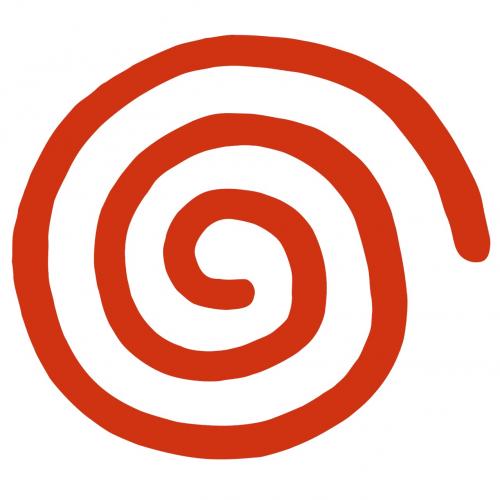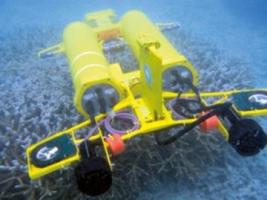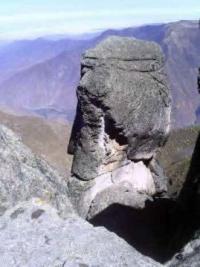Copy Link
Add to Bookmark
Report
Sega Genesis hardware notes

Sega Genesis hardware notes
Version 0.8 (03/02/01)
by Charles MacDonald
WWW: http://cgfm2.emuviews.com
Unpublished work Copyright 2000, 2001 Charles MacDonald
Here is a compilation of some notes I've written up on the Sega Genesis
hardware. Everything described herein has been checked on the real thing,
though that doesn't necessarily mean my testing methods were flawless. :)
Version history
---------------
[0.8]
- Added information on the SVP chip used in Virtua Racing. (section 4.2)
- Added information on EEPROM storage. (section 4.1)
- Changed miscellaneous section around.
[0.7]
- Added more information about access to the Z80 bus. (section 2.2)
- Updated the VDP register information, and removed some things
that were specific to VDP programming. (section 1.1)
- Added some background about the PSG. (section 4)
[0.6]
- Rewrote the 68000 memory map description. (section 1)
- Rewrote the Z80 memory map description. (section 2.1)
- Added memory access section. (section 1.2)
- Added a few miscellaneous topics. (section 4)
[0.5]
- Added more Z80 banking information.
- Added unused VDP address return values from the Z80 side.
- Added example of how to start up the Z80 on power-up.
- Added information on Phantasy Star 4 from Jeff Quinn.
- Added list of consoles that support Mark-III compatibility mode.
- Fixed a few typos.
[0.4]
- Added more details on 68000 and Z80 memory map.
- Added more information on VDP addresses.
- Added some thoughts on Phantasy Star 4.
[0.3]
- Added more information on I/O registers. (section 3)
- Fixed a few typos pointed out by Tim Meekins.
[0.2]
- Added section on I/O port programming and gamepads
[0.1]
- Initial release
Table of Contents
1.) 68000 memory map
1.1) VDP registers
1.2) Memory access quirks
1.3) Clock speeds
2.) Sound hardware overview
2.1) Z80 memory map
2.2) RESET and BUSREQ registers
2.3) Banking
2.4) Interrupts
3.) Input and Output
3.1) Programming I/O ports
3.2) Gamepad specifics
4.) Miscellaneous
4.1) EEPROM
4.2) Virtua Racing
4.3) Phantasy Star 4
4.4) Other topics
5.) Credits
6.) Disclaimer
1.) 68000 memory map
000000-3FFFFFh : ROM
400000-7FFFFFh : Unused (1)
800000-9FFFFFh : Unused (2)
A00000-A0FFFFh : Z80 address space (3)
A10000-A1001Fh : I/O
A10020-BFFFFFh : Internal registers and expansion (4)
C00000-DFFFFFh : VDP (5)
E00000-FFFFFFh : RAM (6)
1. Reads return the MSB of the next instruction to be fetched, with the
LSB set to zero. Writes do nothing.
2. Reading or writing any address will lock up the machine.
This area is used for the 32X adapter.
3. Addresses A08000-A0FFFFh mirror A00000-A07FFFh, so the 68000 cannot
access it's own banked memory. All addresses are valid except for
the VDP which is at A07F00-A07FFFh and A0FF00-A0FFFFh, writing or
reading those addresses will lock up the machine.
4. Reading some addresses lock up the machine, others return the MSB
of the next instruction to be fetched with the LSB is set to zero.
The latter applies when reading A11100h (except for bit 0 reflects
the state of the bus request) and A11200h.
Valid addresses in this area change depending on the peripherals
and cartridges being used; the 32X, Sega CD, and games like Super
Street Fighter II and Phantasy Star 4 use addresses within this range.
5. The VDP is mirrored at certain locations from C00000h to DFFFFFh. In
order to explain what addresses are valid, here is a layout of each
address bit:
MSB LSB
110n n000 nnnn nnnn 000m mmmm
'1' - This bit must be 1.
'0' - This bit must be 0.
'n' - This bit can have any value.
'm' - VDP addresses (00-1Fh)
For example, you could read the status port at D8FF04h or C0A508h,
but not D00084h or CF00008h. Accessing invalid addresses will
lock up the machine.
6. The RAM is 64K in size and is repeatedly mirrored throughout the entire
range it appears in. Most games only access it at FF0000-FFFFFFh.
1.1) VDP registers
The lower five bits of the address specify what memory mapped VDP register
to access:
00h : Data port
02h : Data port
04h : Control port (1)
06h : Control port
08h : HV counter (2)
0Ah : HV counter
0Ch : HV counter
0Eh : HV counter
11h : SN76489 PSG (3)
13h : SN76489 PSG
15h : SN76489 PSG
17h : SN76489 PSG
18h : Unused (4)
1Ah : Unused
1Ch : Unused
1Eh : Unused
1. For reads, the upper six bits of the status flags are set to the
value of the next instruction to be fetched. Bit 6 is always zero.
For example:
move.w $C00004, d0 ; Next word is $4E71
nop ; d0 = -1-- 11?? ?0?? ????
When reading the status flags through the Z80's banked memory area,
the upper six bits are set to one.
2. Writing to the HV counter will cause the machine to lock up.
3. Reading the PSG addresses will cause the machine to lock up.
Doing byte-wide writes to even PSG addresses has no effect.
If you want to write to the PSG via word-wide writes, the data
must be in the LSB. For instance:
move.b (a4)+, d0 ; PSG data in LSB
move.w d0, $C00010 ; Write to PSG
4. Reading the unused addresses returns the next instruction to be fetched.
For example:
move.w $C00018, d0 ; Next word is $4E71
nop ; d0 = $4E71
When reading these addresses through the Z80's banked memory area,
the value returned is always FFh.
Writing to C00018h and C0001Ah has no effect.
Writing to C0001Ch and C0001Eh seem to corrupt the internal state
of the VDP. Here's what each bit does: (assuming word-wide writes)
8E9Fh : These bits cause brief flicker in the current 8 pixels
being drawn when the write occurs.
5040h : These bits blank the display like bit 6 of register #1 when set.
2000h : This bit makes every line show the same random garbage data.
0100h : This bit makes random pattern data appear in the upper eight
and lower ten lines of the display, with the normal 224 lines
in the middle untouched. For those of you interested, the
display is built up like so:
224 lines for the active display
10 lines unused (can show pattern data here with above bit)
3 lines vertical blank (no border color shown)
3 lines vertical retrace (no picture shown at all)
13 lines vertical blank (no border color shown)
8 lines unused (can show pattern data here with above bit)
I know that comes up to 261 lines and not 262. But that's
all my monitor shows.
Turning the display off makes the screen roll vertically,
and random pattern data is displayed in all lines when
this bit is set.
0020h : This bit causes the name table and pattern data shown to
become corrupt. Not sure if the VRAM is bad or the VDP is
just showing the wrong data.
1.2) Memory access quirks
Byte-wide writes
Writing to the VDP control or data ports is interpreted as a 16-bit
write, with the LSB duplicated in the MSB. This is regardless of writing
to an even or odd address:
move.w #$A5, $C00003 ; Same as 'move.w #$A5A5, $C00002'
move.w #$87, $C00004 ; Same as 'move.w #$8787, $C00004'
Byte-wide reads
Reading from even VDP addresses returns the MSB of the 16-bit data,
and reading from odd address returns the LSB:
move.b $C00008, d0 ; D0 = V counter
move.b $C00001, d0 ; D0 = LSB of current VDP data word
move.b $C0001F, d0 ; D0 = $71
nop
move.b $C00004, d0 ; D0 = MSB of status flags
Word-wide writes
When doing word-wide writes to Z80 RAM, only the MSB is written, and
the LSB is ignored:
0000: AA BB CC DD ; Z80 memory
move.w #$1234, $A00000 ; do a word-wide write
0000: 12 BB CC DD ; result
Word-wide reads
A word-wide read from Z80 RAM has the LSB of the data duplicated in the MSB.
0000: AA BB CC DD ; Z80 memory
move.w $A00000, d0 ; do a word-wide read
d0 = $AAAA ; result
1.3) Clock speeds
These are for an NTSC Sega Genesis console.
680000 = 7.67 MHz
YM2612 = 7.67 MHz
Z80 = 3.58 MHz
SN76489 = 3.58 MHz
If anyone has information about timing for PAL consoles, please let me know.
2) Sound hardware overview
The following components used for sound generation:
- Zilog Z80 CPU
- 8k static RAM
- Yamaha YM2612 FM sound generator
- SN76489 PSG
2.1) Z80 memory map
0000-1FFFh : RAM
2000-3FFFh : RAM (mirror)
4000-5FFFh : YM2612 (1)
6000-60FFh : Bank address register (2)
6100-7EFFh : Unused (3)
7F00-7FFFh : VDP (4)
8000-FFFFh : Bank area
1. The YM2612 has two address lines, so it is available at 4000-4003h and
is mirrored repeatedly up to 5FFFh.
2. Writes go to the bank address register, reads return FFh.
The value returned applies to both the 68000 and Z80.
3. Writes are ignored, reads return FFh.
The value returned applies to both the 68000 and Z80.
4. Only addresses 7F00-7F1Fh are valid, writes to 7F20-7FFFh will
lock up the machine.
Z80 access to the VDP has the same results as doing byte-wide reads
and writes as described in section 1.2. So only the HV counter and
PSG can be used effectively.
All I/O ports return FFh, and writing to them has no effect. The Thunder
Force games read port BFh in the IRQ subroutine, this would appear to be
a misunderstanding on the programmer's behalf.
The 68000 can write to A06000h to set up the bank address.
2.2) RESET and BUSREQ registers
Bit 0 of A11100h (byte access) or bit 8 of A11100h (word access) controls
the Z80's /BUSREQ line.
Writing 1 to this bit will request the Z80 bus. You can then release
the bus later on by writing 0.
Reading this bit will return 0 if the bus can be accessed by the 68000,
or 1 if the Z80 is still busy.
If the Z80 is reset, or if it is running (meaning the 68000 does not
have the bus) it will also return 1. The only time it will switch from
1 to 0 is right after the bus is requested, and if the Z80 is still
busy accessing memory or not.
Bit 0 of A11200h (byte access) or bit 8 of A11200h (word access) controls
the Z80's /RESET line.
Writing 0 to this bit will start the reset process. The Z80 manual says you
have to assert the /RESET line for three Z80 clock cycles as a reset does
not happen instantly.
Writing 1 to this bit will stop the reset process. At this point, the Z80
will start executing from address 0000h onwards.
The /RESET line is shared with the YM2612. For as long as the Z80 is reset,
the YM2612 cannot be used.
The Z80 bus can only be accessed by the 68000 when the Z80 is running
and the 68000 has the bus. (as opposed to the Z80 being reset, and/or
having the bus itself)
Otherwise, reading $A00000-A0FFFF will return the MSB of the next
instruction to be fetched, and the LSB will be set to zero. Writes
are ignored. This even applies to the VDP area that would normally
lock up the machine.
Interestingly enough, you can still access $A10000-A1001F during this
time, which seems to be contradictory to some documentation which says
you can only access the I/O region when the 68000 has the bus.
On power-up, the Z80 will be reset and will have the bus.
If you want to load a Z80 program and run it, do the following:
- Stop the reset process
- Request bus
- Load Z80 program
- Start the reset process
- Release bus
- Stop the reset process
2.3) Banking
The Z80 can access the 68000's address space through a banking mechanism
which maps 32k pages to 8000-FFFFh on the Z80 side.
Most games do this to get at large data chunks like YM2612 DAC samples.
However, you can access anything else the 68000 can. (I've tried reading
the version register and setting the VDP border color this way with
success - in fact some 32X sample code shows the PWM sound generator
programmed by the Z80 through banking)
To specify which 32k section you want to access, write the upper nine
bits of the complete 24-bit address into bit 0 of the bank address
register, which is at 6000h (Z80) or A06000h (68000), starting with
bit 15 and ending with bit 23.
For example:
ld ix, $6000 ;
xor a ;
ld (ix), a ; Bit 15 = 0
ld (ix), a ; Bit 16 = 0
ld (ix), a ; Bit 17 = 0
ld (ix), a ; Bit 18 = 0
ld (ix), a ; Bit 19 = 0
ld (ix), a ; Bit 20 = 0
ld (ix), a ; Bit 21 = 0
inc a ;
ld (ix), a ; Bit 22 = 1
ld (ix), a ; Bit 23 = 1
After this routine executes, Z80 addresses 8000-FFFFh now correspond
to 68000 addresses C00000-C07FFFh.
In my own tests, I've been unable to do the following:
- Read banked 68000 RAM. (returns FFh)
- Find result of partial writes to the bank address register.
- Have the Z80 read A00000-A0FFFF through the banked memory area.
(locks up the machine)
Steve Snake informed me that reading 68000 RAM is possible, but is not
a recommended practice by Sega. Perhaps only some models of the Genesis
allow for it.
2.4) Interrupts
The Z80 runs in interrupt mode 1, where an interrupt causes a RST 38h.
However, interrupt mode 0 can be used as well, since FFh will be read
off the bus.
The Z80 will recieve an IRQ from the VDP on scanline E0h. This happens
once per frame, every frame, regardless of frame interrupts being
disabled by the 68000.
If the Z80 has interrupts disabled when the frame interrupt is supposed
to occur, it will be missed, rather than made pending.
There is no way to trigger an NMI unless the Genesis has been switched
into Mark 3 compatability mode, and this only means the NMI line is
mapped to the cartridge port, it's not controllable through software.
3.0) Input and Output
The Genesis has three general purpose I/O ports. Devices like gamepads,
modems, light guns, etc. can be used with them.
Here's a read-out of the I/O registers in their default state. Each
one can be read at an even address (e.g. A1000Dh == A1000Ch) as well.
A10001h = A0 Version register
A10003h = 7F Data register for port A
A10005h = 7F Data register for port B
A10007h = 7F Data register for port C
A10009h = 00 Ctrl register for port A
A1000Bh = 00 Ctrl register for port B
A1000Dh = 00 Ctrl register for port C
A1000Fh = FF TxData register for port A
A10011h = 00 RxData register for port A
A10013h = 00 S-Ctrl register for port A
A10015h = FF TxData register for port B
A10017h = 00 RxData register for port B
A10019h = 00 S-Ctrl register for port B
A1001Bh = FF TxData register for port C
A1001Dh = 00 RxData register for port C
A1001Fh = 00 S-Ctrl register for port C
Bit 7 of the Data registers can be read or written.
Any bit that is set as an input will return '1'.
Any bit that is set as an output will return the value last written.
Bits 7-0 of the Ctrl registers can be read or written.
Bits 7-0 of the TxData registers can be read or written.
The RxData register will always return zero.
Bits 7-4 of the S-Ctrl registers can be read or written.
3.1) Programming I/O ports
In the context of this description, I'll assume the device plugged in is a
gamepad. However, other periperhals like multi-taps, modems, mice, light
guns, etc, exist.
Here's a pin-out of the connector:
Pin 1 - UP
Pin 2 - DOWN
Pin 3 - LEFT
Pin 4 - RIGHT
Pin 5 - Vcc
Pin 6 - TL
Pin 7 - TH
Pin 8 - GND
Pin 9 - TR
Each I/O port has several associated registers. I'll only cover the
data and control registers, as the others are used for serial and
parallel communication.
The data register corresponds to the I/O port pins like so:
Bit 7 - (Not connected)
Bit 6 - TH
Bit 5 - TL
Bit 4 - TR
Bit 3 - RIGHT
Bit 2 - LEFT
Bit 1 - DOWN
Bit 0 - UP
A '0' means a button has been pressed, and '1' means a button has been
released.
Bit 7 isn't connected to any pin on the I/O port. It will latch a value
written to it, as shown:
move.b $A10003, d0 ; D0 = $7F
move.b #$80, $A10003 ; Bit 7 = 1
move.b $A10003, d0 ; D0 = $FF
move.b #$00, $A10003 ; Bit 7 = 0
move.b $A10003, d0 ; D0 = $7F
Bits 6-0 of the control register define what bits of the data register
are inputs or outputs. Gamepads use TH as an output and the remaining
pins as input, so a value of $40 would be written to the control register.
3.2) Gamepad specifics
A gamepad maps the directional pad to the pins mentioned earlier
(left, right, up, down), and multiplexes the four buttons (A, B, C, Start)
through the TL and TR pins.
The TH pin controls which pairs of buttons (either A, Start or C, B) are
output through TL and TR by the multiplexer chip.
In order to read all the buttons, A program will set TH = 1, read the data
port, set TH = 0, and read the port again. The data returned is as follows:
TH = 0 : ?0SA00DU
TH = 1 : ?1CBRLDU
? = Whatever was last written to bit 7.
S = Start
A = Button A
B = Button B
C = Button C
U = Up
D = Down
L = Left
R = Right
A 6-button gamepad allows the extra buttons to be read based on how
many times TH is switched from 1 to 0 (and not 0 to 1). Observe the
following sequence:
TH = 1 : ?1CBRLDU 3-button pad return value
TH = 0 : ?0SA00DU 3-button pad return value
TH = 1 : ?1CBRLDU 3-button pad return value
TH = 0 : ?0SA0000 D3-0 are forced to '0'
TH = 1 : ?1CBMXYZ Extra buttons returned in D3-0
TH = 0 : ?0SA1111 D3-0 are forced to '1'
M = Mode
X = Button X
Y = Button Y
Z = Button Z
From this point on, the standard 3-button pad values will be returned
if any further TH transitions are done.
If TH isn't modified in about 8192 (probably less than that) 68000 CPU
cycles, a 'time-out' will occur and the sequence to read 6-button values
can be done again. Games usually poll the gamepad once per frame,
which is always enough for the time-out to occur.
I believe checking if D3-D0 are all set or clear (as shown in the list
above) would be another method to verify if 6-button or 3-button pad data
was being returned.
Some games may access the gamepad in a way that causes 6-button values
to be returned when 3-button values are expected. To get around this,
the MODE button can be held down when powering-up the console, and
the 6-button gamepad will respond like a 3-button one.
4.) Miscellaneous
The following are miscellaneous topics.
4.1) EEPROM
Some cartridges use a Xicor X24C01 EEPROM chip. The chip is programmed
in a serial fashion (it has only two wires), and has 128 8-bit bytes
of storage.
Games using EEPROM have the backup data string at offset $1B0 in the
cartridge header area formatted like so:
0001B0: 52 41 E8 40 00 20 00 01 00 20 00 01
The Sega manual describes how the above data should be interpreted.
In this case, it corresponds to a device mapped to odd memory addresses,
occupying the byte at $200001.
The only games I know of which use an EEPROM chip are:
- Wonderboy 3 / Monster World IV
- Rockman Megaworld
- Megaman: The Wily Wars
4.2) Virtua Racing
The Virtua Racing cartridge has 2MB ROM, 128K RAM, and a custom DSP chip
called the 'Sega Virtua Processor' (SVP), which is manufactured by Sega.
To the best of my knowledge, the SVP chip has internal ROM and possibly
internal RAM.
The main purpose of the SVP is to render polygons as 8x8 patterns, which
the game program transfers to VRAM from the 128K RAM area using DMA.
The VR cartridge has the following memory map:
000000-1FFFFFh : Program ROM (2MB)
200000-2FFFFFh : Unused
300000-31FFFFh : On-cart RAM (128K)
320000-3FFFFFh : (?)
390000-39FFFFh : (?)
3A0000-3AFFFFh : (?)
The SVP chip has registers mapped in the I/O space:
A15000.w - Can read and write commands
A15005.b - Reading bit 0 acts like a status flag (SVP busy?)
A15006.w - Unknown ($0000, $0001, $000A written)
A15008.w - Unknown ($0000, $0001, $0000 written)
Commands are two bytes in size, and are read and written to A15000h.
FFFFh - Command reset (?) (done before any access)
'SV' - Command init (?) (written before SVP communication)
'OK' - Command OK (?) (written after 'SV')
'Tx' - Where 'x' equals the following value based on the command
selected in the test menu:
0 - "DSP ROM RD" and
"DSP RAM OVER WRITE"
1 - "DSP DRAM R/W"
2 - "DSP IRAM R/W"
4 - "DSP POINTER"
To emulate the SVP chip, somebody needs to figure out how to dump the
internal ROM (the test menu shows that it has a DSP ROM reading option,
perhaps sending a certain command to the SVP makes it map it's internal
ROM within the $300000-$3FFFFF area) and figure out how the DSP works.
All of the above information came from physically examining a VR cartridge,
and from disassembling the test menu code. (found at $1B000 for those
of you who are interested)
4.3) Phantasy Star 4
Phantasy Star 4 is a 24 megabit game with 16k of battery backed RAM
mapped to $200001-$203FFF. (odd addresses used) It has ROM in the same
area where the RAM is. I've observed that the game will always write
$01 to $A130F1 before accessing the RAM, and then write $00 when
done. It could be that bit 0 of $A130F1 controls ROM/RAM banking at
that location.
Jeff Quinn has tested this and confirmed it to work, and also reported
an area of the game where supporting banked SRAM is important; when
your characters encounter a GEROTLUX below the town of Tyler on Dezolis,
the game will try to access the ROM data that is obscured by SRAM.
4.4) Other topics
- The 68000 RESET instruction has no effect.
- If the VDP is not accessed often enough, it will (appear) to lock up.
I'm not sure what the cause is, but any control port access is enough
to keep it going. Maybe some of the internal VDP memory is composed
of DRAM cells that lose their data after a while. This happens in
the Mark III compatability mode as well as mode 4 and mode 5.
- The status of the YM2612 can be read at any of it's four addresses.
Since only address zero is documented as valid, it could be that the
other addresses may return an incorrect result in some situations.
- The PSG is compatible with the Texas Instruments SN76489. It is actually
on the same physical chip as the VDP, and it's output comes directly
out of the VDP to be mixed with the YM2612. Sega did the same thing
with the System C2 (possibly System 18) and SMS VDPs as well.
Can anyone contribute some information about the Genesis security
and operating system ROM features? I know of a few:
- Games must write the text 'SEGA' to A14000h if the lower four
bits of the version register return 01h.
- Writing 01h to A14101h disables the OS ROM and swaps in the cart ROM.
- The OS ROM checks for 'SEGA' or ' SEGA' at offset 100h in the cart ROM.
Here's a list of consoles that support the Mark III compatability mode.
- Sega Mega Drive
- Sega Mega Drive 2
- Sega Genesis
- Sega Genesis 2
And ones that do not:
- Genesis 3 (Majesco)
If anyone has tested this with the Nomad, CDX, MegaJet, etc., please
let me know.
5.) Credits
I would like to thank the following people for contributing information:
Bart Trzynadlowski, Christian Schiller, Flavio Morsoletto, Jeff Quinn,
Mike Gordon, Naflign, Omar Cornut, Steve Snake, and Tim Meekins.
Contributors to the Sega Programming FAQ.
Gringoz for the Genesis schematics.
6.) Disclaimer
If you use any information from this document, please credit me
(Charles MacDonald) and optionally provide a link to my webpage
(http://cgfm2.emuviews.com/) so interested parties can access it.
The credit text should be present in the accompanying documentation of
whatever project which used the information, or even in the program
itself (e.g. an about box)
Regarding distribution, you cannot put this document on another
website, nor link directly to it.























